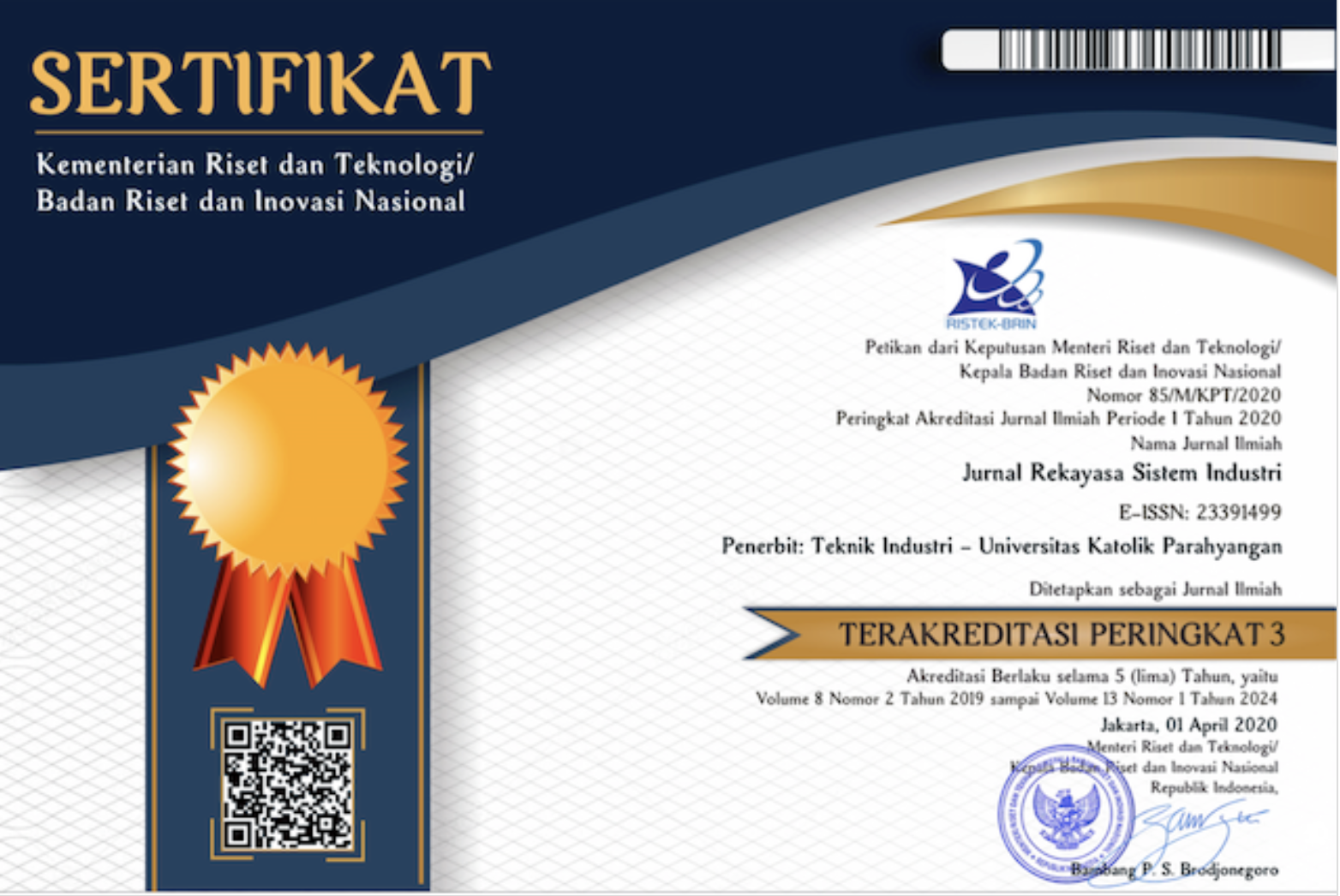Penilaian Atribut Usabilitas oleh Gamer First Person Shooter (FPS) Indonesia
DOI:
https://doi.org/10.26593/jrsi.v5i2.2217.96-105Abstract
Computer games, especially First Person Shooter (FPS) have become one of the fastest growing and most economically sucessful software in Indonesia. Given the potential economic benefits of the FPS games, it is important to design its user interface as usable as possible to win the market. In accordance, it is crucial to find out what user interface factors should be considered in designing an FPS game. These factors can be used as a designing guide for game developers in Indonesia. The purpose of this paper is to discover the main user interface factors that should be considered in designing an FPS game especially from usability point of view and to suggest improvement of the user interface in current FPS game.
Fourty (40) usabilty attributes from literature review are qualitatively grouped into 5 factors. Those factors are: Basic FPS Feature (BFF), Basic Game Feature (BGF), Display & Sounds (D&S), Help & Hints (H&H), and Enjoyment (E). Usability testing on the factors is conducted in three different groups of players: Novice, Experienced, and Expert. Mann-Withney Test are conducted to understand performance difference for each group. The result shows that BGF and H&H are not significantly difference for all groups. While for BFF, the novice group tend to have different preference rather than other groups since there is not enough time duration given on novice users accessing the FPS feature. For D&S, expert tend to have different preference rather than other groups. Some future research potentials are also proposed in this paper.References
Ak, O. (2012). A game scale to evaluate educational computer games. Procedia - Social and Behavioral Sciences, 46, 2477 – 2481.
Almeida, S., Veloso, A., Mealha, Ó., Roque, L. & Moura, A. (2012). A Video Game Level Analysis Model Proposal. International Conference on Information Visualisation. IEEE.
Ardisasmita, A. (2015). Berapa Jumlah Studio Game di Indonesia? https://ardisaz.com/2015/09/22/berapa-jumlah-studio-game-di-indonesia/ [2016, 14 Oktober]
Black, K. (2010). Business Statistics for Contemporary Decision Making, 6th edition. USA : John Wiley & Sons, Inc.
Claypool, K. & Claypool, M. (2009). The Effects of Resolution on Users Playing First Person Shooter Games. Proceedings of ACM/SPIE Multimedia Computing and Networking (MMCN). San Jose, California, USA.
Dickey, M. D., 2005, Engaging By Design: How Engagement Strategies in Popular Computer and Video Games Can Inform Instructional Design. InEducational Technology Research & Development, 53, 67-83.
E. S. A. (2012). Sales, Demographic and Usage Data: Essential Facts About The Computer and Video Game Industry. www.theESA.com [2016, Oktober 14]
E. S. A. (2016). 2015 Annual Report. www.theESA.com [2016, Oktober 14]
Fagerholt, E. & Lorentzon, M. (2009). Beyond the HUD User Interfaces for Increased Player Immersion in FPS Games. Master Thesis. CHALMERS UNIVERSITY OF TECHNOLOGY.
Fu, F.-L., Su, R.-C. & Yu, S.-C. (2009). EGameFlow: A scale to measure learners’ enjoyment of e-learning game. Computers & Education, 52, 101–112.
Friker, H. (2012). Game User Interface Guideline: Creating a set of Usability Design Guidelines for the FPS Game User-Interface. Master Thesis: University of Huddersfiled
Graham, T. C. N., Curzon, P., Doherty, G., Palanque, P., Potter, R., Roast, C. & Smith, S. P. (2007). Usability and Computer Games: Working Group Report. DSVIS 2006, LNCS 4323, 265-268.
Kim, Y.-B., Shim, M.-S., Song, C. G. & Kim, Y.-S. (2007). A First Person Shooter with Dual Guns Using Multiple Optical Air Mouse Devices. International Proceeding Conference on Artificial Reality and Telexistence. IEEE.
Kim, J-Y. (2015). A Study on Comparison and Analysis of Usability Evaluation Model Gameplay. Advanced Sciences and Technology Letters, Vol. 99, pp. 227-230
Krug, S. (2006). Don’t make me think 2nd edition. Berkeley: New Riders Publishing
Lenz, K. & Fox, D. (2008). Examining the Critical User Interface Components of First-Person Shooter (FPS) Games. Usability News, 10.
Mla, 2012, Game Apa yang Paling Digemari di Indonesia? , Jakarta: detikinet, [Online,diakses pada tanggal 23 Oktober 2012]
Pratama, D. & Rahman, A. (2012). Perancangan Game Edukasi pada Bencana Erupsi gunung Berapi. TEKNIK POMITS, 1.
Prestiliano, J. (2012). Animasi & Game Kreatif Sebagai Sebuah Peluang Usaha & Lapangan Kerja.
Raanen, K., Gronli, T. (2014). Latency Thresholds for Usability Games: A Survey. http://ojs.bibsys.no/index.php/NIK/article/view/9/6 [2016, 14 Oktober]
Sekaran, U. (2000). Research Methods for Business: A Skill Building Approach, 3rd edition. USA: John Wiley & Sons, Inc.
Sibero, I. C. (2009). Langkah Mudah Membuat Game 3D, Yogyakarta: MediaKom.
Snow, B. (2007). Gaming Usability 101. http://www.bloomberg.com/news/articles/2007-10-12/gaming-usability-101businessweek-business-news-stock-market-and-financial-advice [2016, 14 Oktober]
Yannakakis, G. N. & Hallam, J. (2007). Capturing Player Enjoyment in Computer Games. Studies in Computational Intelligence (SCI), 71, 175–201.
Yoon, J.-W., Jang, S.-H. & Cho, S.-B. (2010). Enhanced User Immersive Experience with a Virtual Reality based FPS Game Interface. IEEE Proceeding Conference on Computational Intelligence and Games.
Zaphiris, P. & Ang, C. S. (2007). HCI Issues in Computer Games, Interacting with Computer, 19, 135-139.













